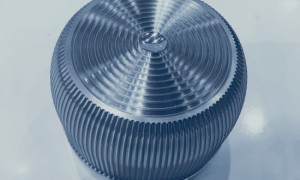How to design CNC parts?
Views: 751 Update date: Jun 18,2024
Designing CNC (Computer Numerical Control) parts involves a combination of engineering principles, CAD (Computer-Aided Design) software skills, and understanding of CNC machining processes. Here’s a step-by-step guide to help you design CNC parts:
Material Selection: Choose the appropriate material based on mechanical properties, machinability, and cost.
Tolerances and Surface Finish: Determine the necessary tolerances and surface finish.
Simple Shapes: Identify basic shapes and features such as holes, slots, and pockets.
Start with basic shapes and progressively add details.
Ensure all dimensions and features are accurately represented.
Check Interferences: Ensure the part will fit and function within the assembly if it’s part of a larger system.
Feature Size and Geometry: Ensure features are not smaller than the smallest tool that will be used.
Fillets and Radii: Incorporate appropriate radii for internal corners to accommodate tool paths.
Avoiding Thin Walls: Design to avoid thin walls that can cause issues during machining.
Standard Tool Sizes: Use standard tool sizes to reduce costs and increase availability.
Symmetry: Where possible, design parts symmetrically to simplify machining and reduce setup time.
Define the machining operations: roughing, finishing, drilling, etc.
Set the cutting parameters: speeds, feeds, depth of cut.
Simulate the Toolpaths: Run simulations to ensure there are no collisions or errors.
Prototype: If possible, create a prototype to validate the design and functionality.
DFM Analysis: Perform Design for Manufacturability (DFM) analysis to identify any potential issues.
BOM (Bill of Materials): List all materials and components needed for the part.
Quality Control: Inspect the machined part for adherence to specifications and tolerances.
Testing: Perform functional testing to ensure the part meets all requirements.
Documentation: Keep detailed records of all design decisions, changes, and feedback.
Collaboration: Work closely with machinists and engineers throughout the design process.
By following these steps, you can design parts that are optimized for CNC machining, ensuring efficient production and high-quality results.
Prev: How much does CNC milling cost per hour?
Next: How much does CNC machining cost?
1. Define the Requirements
Purpose and Function: Understand the purpose of the part and its functional requirements.Material Selection: Choose the appropriate material based on mechanical properties, machinability, and cost.
Tolerances and Surface Finish: Determine the necessary tolerances and surface finish.
2. Create a Sketch or Initial Design
Hand Sketches: Begin with rough hand sketches to conceptualize the part.Simple Shapes: Identify basic shapes and features such as holes, slots, and pockets.
3. Use CAD Software
3D Modeling: Use CAD software (like SolidWorks, AutoCAD, Fusion 360) to create a detailed 3D model of the part.Start with basic shapes and progressively add details.
Ensure all dimensions and features are accurately represented.
Check Interferences: Ensure the part will fit and function within the assembly if it’s part of a larger system.
Draft Angles: Incorporate necessary draft angles to facilitate easy machining and part ejection if necessary.

4. Consider CNC Machining Constraints
Tool Access: Design features considering the accessibility of the cutting tools.Feature Size and Geometry: Ensure features are not smaller than the smallest tool that will be used.
Fillets and Radii: Incorporate appropriate radii for internal corners to accommodate tool paths.
Avoiding Thin Walls: Design to avoid thin walls that can cause issues during machining.
5. Optimize for Manufacturing
Reducing Setup Changes: Design the part to minimize the number of setups required during machining.Standard Tool Sizes: Use standard tool sizes to reduce costs and increase availability.
Symmetry: Where possible, design parts symmetrically to simplify machining and reduce setup time.
6. Generate CNC Toolpaths
CAM Software: Use CAM (Computer-Aided Manufacturing) software to create the toolpaths for the CNC machine.Define the machining operations: roughing, finishing, drilling, etc.
Set the cutting parameters: speeds, feeds, depth of cut.
Simulate the Toolpaths: Run simulations to ensure there are no collisions or errors.
7. Review and Validate the Design
Peer Review: Have your design reviewed by peers or experts.Prototype: If possible, create a prototype to validate the design and functionality.
DFM Analysis: Perform Design for Manufacturability (DFM) analysis to identify any potential issues.
8. Documentation
Technical Drawings: Create detailed technical drawings with all necessary dimensions, tolerances, and notes.BOM (Bill of Materials): List all materials and components needed for the part.
9. Production and Testing
CNC Machining: Send the finalized design to the CNC machine for production.Quality Control: Inspect the machined part for adherence to specifications and tolerances.
Testing: Perform functional testing to ensure the part meets all requirements.
Best Practices
Iterative Design: Expect to iterate on the design based on feedback and testing results.Documentation: Keep detailed records of all design decisions, changes, and feedback.
Collaboration: Work closely with machinists and engineers throughout the design process.
By following these steps, you can design parts that are optimized for CNC machining, ensuring efficient production and high-quality results.

